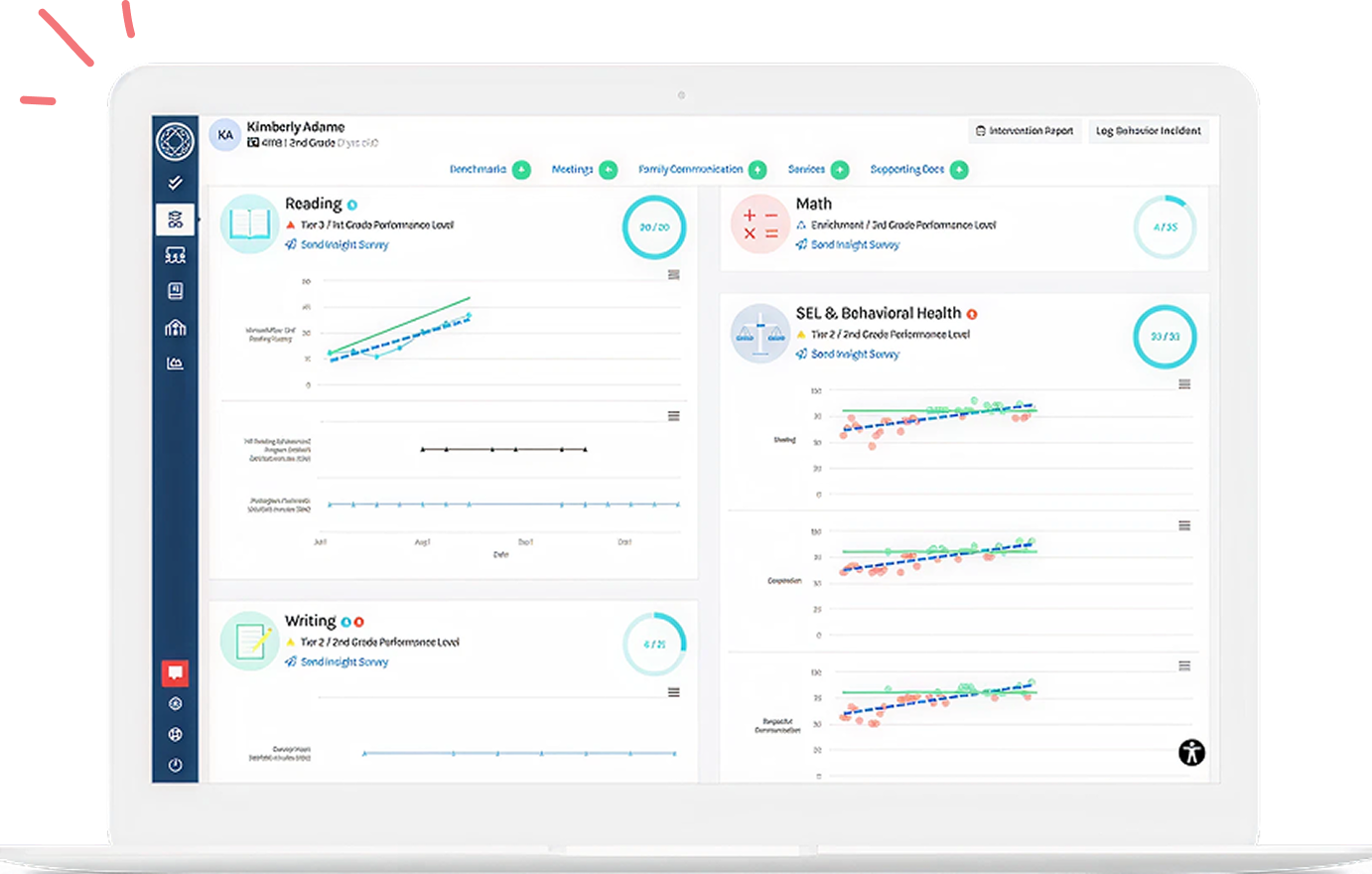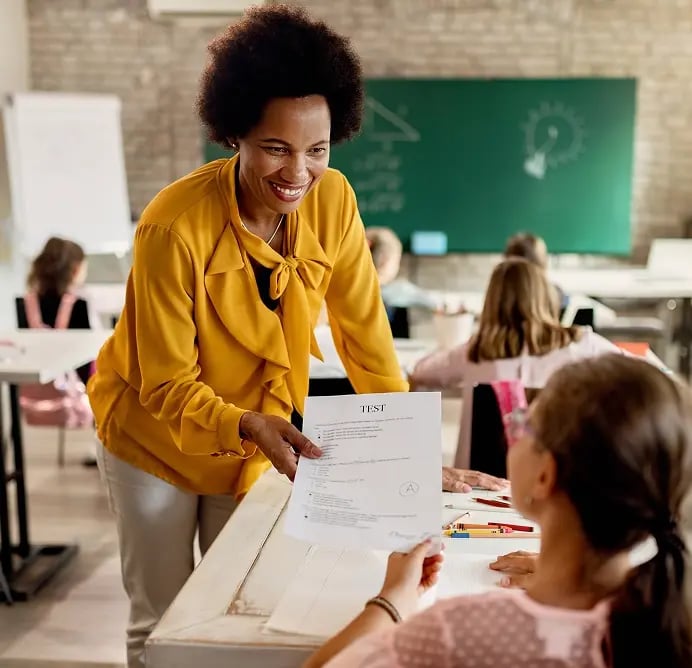Among many of the COVID-19 and remote learning struggles for educators, understanding students’ assessment data has been one of the most common challenges. Interpreting student scores from universal screeners and benchmarks, and using the data to inform instruction and support, is an essential component of any MTSS framework.
Without this information, educators must rely solely on their own observations of students to determine who is keeping up and who is falling behind. And of course, this becomes even more of a struggle when teachers aren’t able to observe and work with their students in person.
These types of issues will likely stick around for a while, but as long as we continue to have students learning remotely it is essential to figure out ways to work with the data and information that is available. Below are common concerns that educators have with assessment data from their remote learners and suggestions for how to address them.
1. Students Are Not Completing Their Assessments Independently
Many educators we have spoken with have expressed concern about parents or other family members at home helping their children complete benchmarks, screeners, and other assessments. If this is an issue at your district or school, whenever possible, try to have remote learning students complete assessments in the school building. Of course, this option will not be possible for all schools and students.
In schools where this is not feasible for all students, consider only having students who appear to be struggling or falling behind, or have difficulty engaging in the remote learning context, come into the building to complete the assessment. This can be done in smaller groups or cohorts of students in order to maintain social distancing. Another option is to have the assessments proctored remotely over video so teachers can ensure students are completing them independently.
It's also essential to communicate the purpose of these screeners and assessments to parents, family members, and students. Frame the assessment as a formative evaluation used to guide teachers’ instruction and support for students, rather than contributing to a student’s overall grade or outcome. This framing should not only be used for parents, but for students as well, so they understand the purpose of trying their best and not getting discouraged or seeking help from a parent if they cannot figure out the answer to a question.
2. Students Are Scoring Higher Than Expected
Despite best efforts, there will likely be students who do receive help from adults in their home and therefore seem to be scoring higher than what is expected, based on their other classwork or past assessment scores. Because of this, some districts may be tempted to use old screener data; nevertheless, using assessment data that is more than six months old is generally not recommended.
Instead, we still suggest moving forward with the current scores and using them as a “first pass” for tiering students. Teachers and grade-level teams should then carefully review tier groups for remote students and use other data to verify their tier levels. For example, if the results of a universal screener place a student in Tier 1, but the student is not submitting assignments and/or they clearly are struggling with the classwork, you could adjust their tier level so that these issues are being recognized and addressed through more focused support. Another option is to administer a short assessment, test, or quiz virtually with the student, one-on-one. This again can be used to verify the student’s tier level.
3. Students Are Scoring Lower Than Expected
Educators working in hybrid classrooms might start to notice their remote students are falling further behind than students learning in-person. Unfortunately, this is an inevitable part of the COVID slide, especially as students are spending more time away from the classroom. Some students may be getting the support they need at home to keep up, while others are unable to stay engaged and are falling further behind.
Some students completing screeners at home on their own may find it harder to keep their attention focused and complete the assessment in the same way they would if they were in the school building. Thus, a student who in the past was performing at grade level could be scoring much lower. The difficult part is knowing if they are truly falling behind or if their test scores are not an accurate representation of their skill level.
Again, it's recommended that schools move forward with tiering students but review the tier groups carefully, especially for students who are learning remotely. If a student scored low but seems to be keeping up with day-to-day classroom activities and lessons, you could hold off on providing them with more individualized support. A short quiz or test could also be used to gauge how the student is doing.
RELATED RESOURCE:
Check out this webinar on using screening data to tier students for RTI/MTSS
If it seems like these lower scores are an accurate representation of many students falling behind, you may need to adjust your Tier 1 core curriculum to meet the needs of these remote students (see this blog post on tier movement and what to do in the case of an inverted pyramid).
You can also create more Tier 2 groups so students who are beginning to fall behind are getting some additional support to offset those declines. Progress monitoring, even if done remotely, will also be helpful in determining which students may be struggling the most as a result of distance learning.
In Summary...Screeners and Benchmark Assessments Shouldn’t Be Postponed Indefinitely
Screeners and benchmark assessments are still important components of MTSS and shouldn’t be postponed indefinitely, especially since remote learning could stay for a while. Tiering students is also important as it identifies which students require ongoing interventions and supports, in addition to the core instructional content.
However, tiering students off of universal screening scores is only the first step in identifying which students require Tier 2 or 3 support. Decisions regarding tier placement should also be based on any and all available data as well as teachers’ observations of how the student is keeping up and progressing while learning remotely.
RELATED RESOURCE: 6 Pillars for Continuity of MTSS in a
Distance/Hybrid Learning Setting

About the author
Dr. Essie Sutton
Essie Sutton is an Applied Developmental Psychologist and the Director of Learning Science at Branching Minds. Her work brings together the fields of Child Development and Education Psychology to improve learning and development for all students. Dr. Sutton is responsible for studying the impacts of the Branching Minds on students’ academic, behavioral, and social-emotional outcomes. She also leverages MTSS research and best practices to develop and improve the Branching Minds platform.

Your MTSS Transformation Starts Here
Enhance your MTSS process. Book a Branching Minds demo today.















.png?width=716&height=522&name=Understanding%20Literacy%20Basics%20(Preview).png)
.png?width=716&height=522&name=Addressing%20Foundational%20Reading%20Skills%20in%20MTSS%20(preview).png)
.png?width=716&height=522&name=Qualitative%20data%20MTSS%20(preview).png)